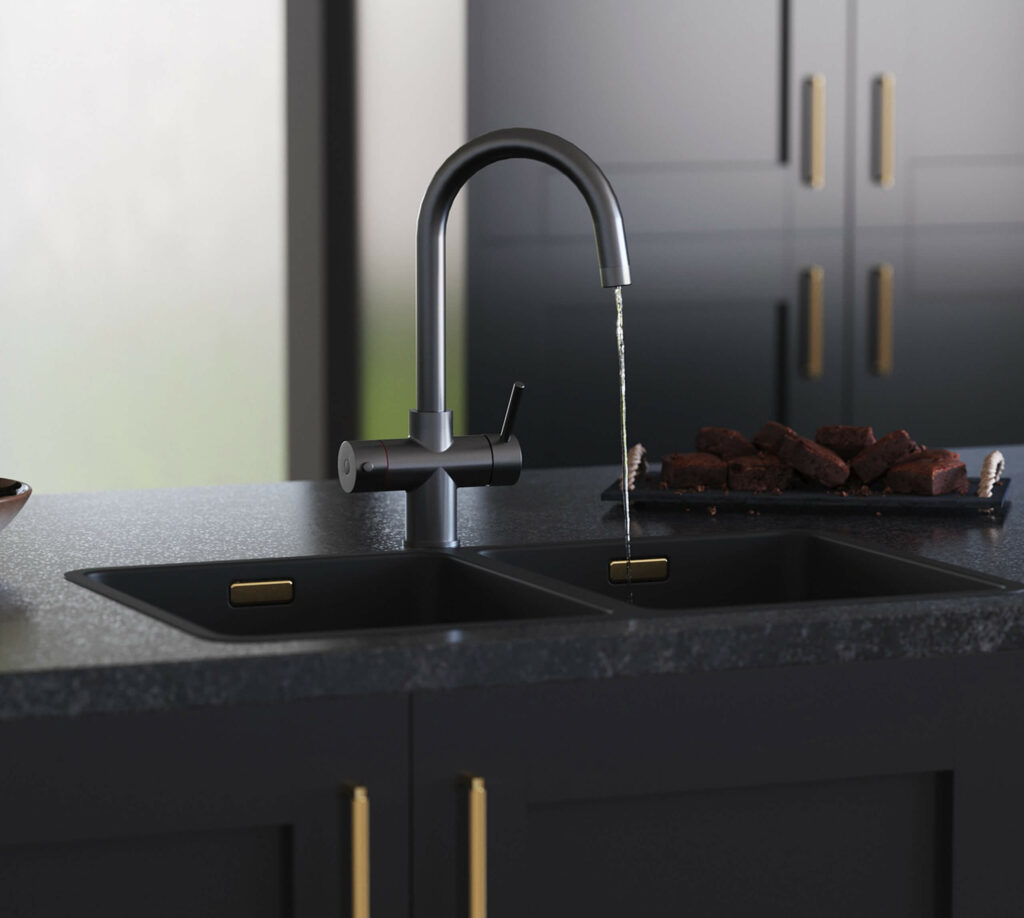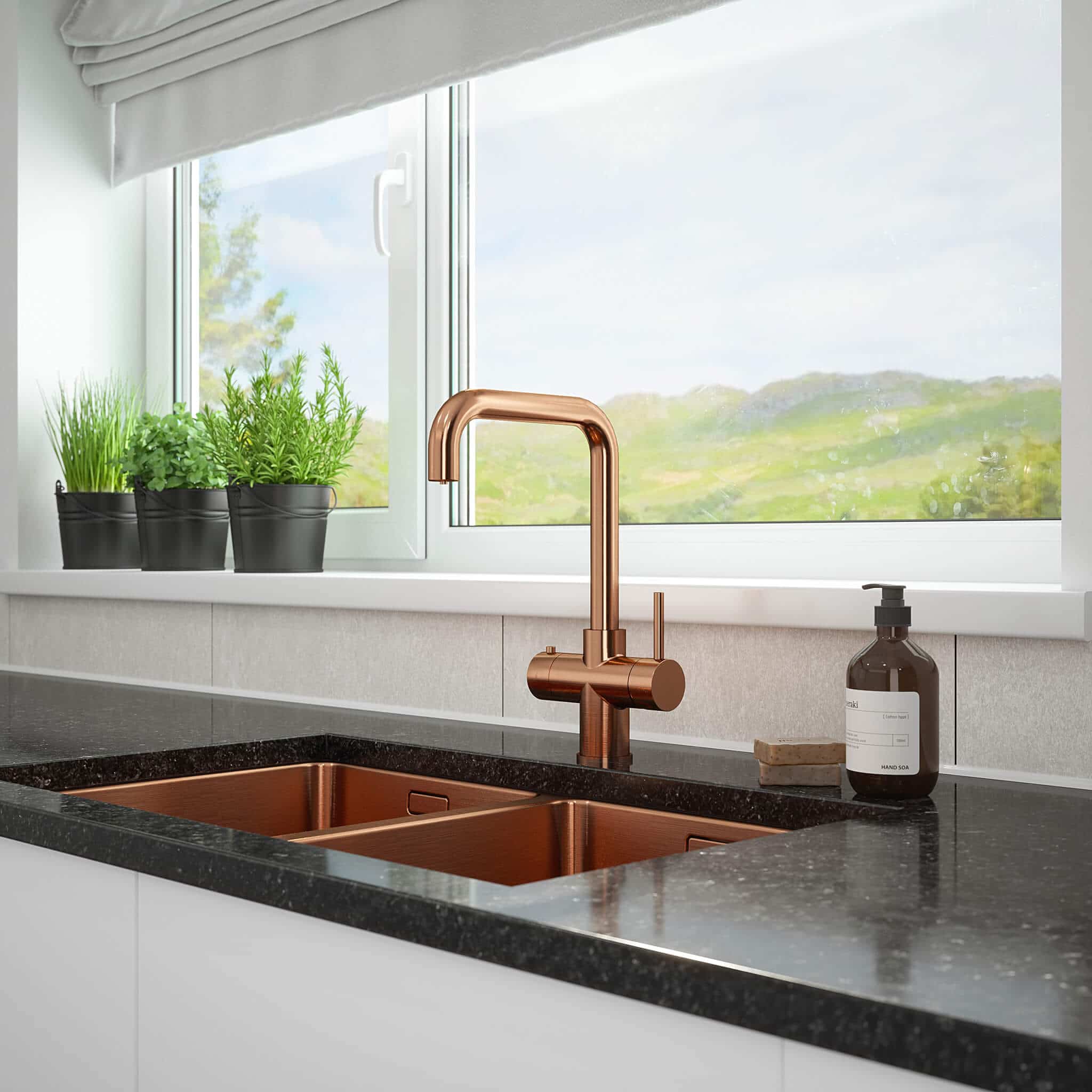How Do Boiling Water Taps Work? From the Experts

Are you tired of waiting for the kettle to boil? Do you daydream about instant cups of tea or coffee at the turn of a tap? If so, boiling water taps might just be your cup of tea - pun intended!
In this article, we’re going to take a deep dive into the world of boiling water taps - how do they provide boiling water in an instant, what makes them tick, and why might you consider installing one in your own kitchen? Trust us, by the end of this, you'll be as excited about boiling water taps as we are!
What Are Boiling Water Taps and How Do They Work?
A boiling water tap operates through a specialised system installed beneath your sink, connected to both the mains and your home's water supply. The heart of this system is a dedicated tank that not only heats the water but also maintains it at a precise temperature.
As a result, every time you activate the tap, you have immediate access to hot water, eliminating the wait time typically associated with traditional heating methods. This instant availability of boiling water is what sets these taps apart in modern kitchen designs.

Components of a Boiling Water Tap
Let's delve into the key components that make a hot water tap function as it does:
- The Boiler Tank: This is the engine room of a boiling water tap system. It's typically a compact unit that fits neatly under your sink and heats the water to a near-boiling temperature. The boiler tank maintains the water at this temperature so that it's ready to go whenever you need it.
- The Filter: The filter plays a crucial role in ensuring the water you get from your tap is as clean and pure as possible. It removes any impurities and contaminants from the water before it reaches the boiler tank, providing you with a healthier and tastier hot drink.
- The Tap: The tap is the final point of contact between you and your hot water. Most boiling water taps are designed with safety in mind, featuring child-safe handles and insulated sides to prevent anyone from getting scalded accidentally. The tap typically has two separate flow controls – one for regular cold and hot water, and another for instant boiling water. 4-in-1 taps may have an additional control for chilled filtered water.
By combining these components, a boiling water tap provides a seamless and efficient way to access hot water instantly, all from the convenience of your kitchen sink.
The Installation Process
Installing a boiling water tap might seem like a daunting task, but with the right preparation and a step-by-step approach, it can be quite straightforward. Always remember to follow the manufacturer's instructions and consult a qualified professional if in doubt. Here are the general steps involved in the installation process:
- Choosing the Right Space: The first step in installing a boiling water tap is identifying the right spot in your kitchen. You'll need a spot near your sink and an accessible area beneath it to house the boiler tank and filter.
- Turn Off the Water Supply: Before starting with the installation, make sure to turn off the water supply to avoid any water damage. It's always a good idea to clear out the area under the sink to give yourself plenty of room to work.
- Install the Boiler Tank and Filter: Now, it's time to install the boiler tank and the filter inside the cabinet under your sink. Each model will have specific instructions, so ensure you follow these to the letter. Typically, you'll mount these securely to the side or the base of the cabinet.
- Connect the Water Supply: Once the tank and filter are in place, you’ll need to connect them to your water supply. This usually involves attaching a T-piece to your cold water pipe, which will split the water flow between the main tap and the boiler tank.
- Fit the Tap: With the tank and filter fitted, you can now install the new tap in your chosen position. You'll need to fix the tap to the sink or worktop and connect the tap to the boiling water system using the hoses supplied.
- Turn on the Water Supply: Once everything is connected and tightened, you can turn the water supply back on. Check for any leaks and make sure the tap is working properly.
- Power Up and Test: Finally, plug in the boiler tank and turn it on. It might take a short while before the system heats up. Once it has reached the correct temperature, test the tap to ensure you get a steady flow of boiling water.
For more detailed instructions, including demonstration videos, head to our installation page.
Maintenance and Energy Efficiency
Boiling water taps are designed with user-friendly maintenance in mind:
- Filter Changes: Regularly changing the filter, typically every 6 to 12 months as advised by the manufacturer, ensures your tap water remains clean and fresh. This also contributes to the longevity of the tap and boiler tank.
- Indicator Lights: Some models come equipped with an indicator light to signal when it's time for a filter change.
- Leak Checks: Conducting periodic checks for leaks, particularly after filter changes, can help prevent potential damages.
- Leave it On: It's best to leave the boiling water tap on overnight, only switching it off via the boiler tank when it will be left for 2 weeks or longer.
Read more about maintaining a boiling water tap here.
Are boiling water taps energy efficient?
In terms of energy efficiency, boiling water taps excel:
- Insulated Boiler Tank: The insulated boiler tank maintains water at near-boiling temperatures without excessive energy use, providing hot water on demand.
- Efficiency Over Traditional Methods: This is more energy-efficient than a standard kettle, which often heats more water than necessary, leading to wasted energy.
- Energy and Carbon Footprint Reduction: By only heating the amount of water you need, a boiling water tap can conserve energy and decrease your carbon footprint.

Final Thoughts
In a nutshell, boiling water taps are the triple threat of kitchen fixtures: they're convenient, stylish, and energy-efficient. And guess what? We happen to sell them right here at Hot Water Taps! For a deep dive into why these taps are revolutionising the British kitchen, check out our Ultimate Guide to Boiling Water Taps.
